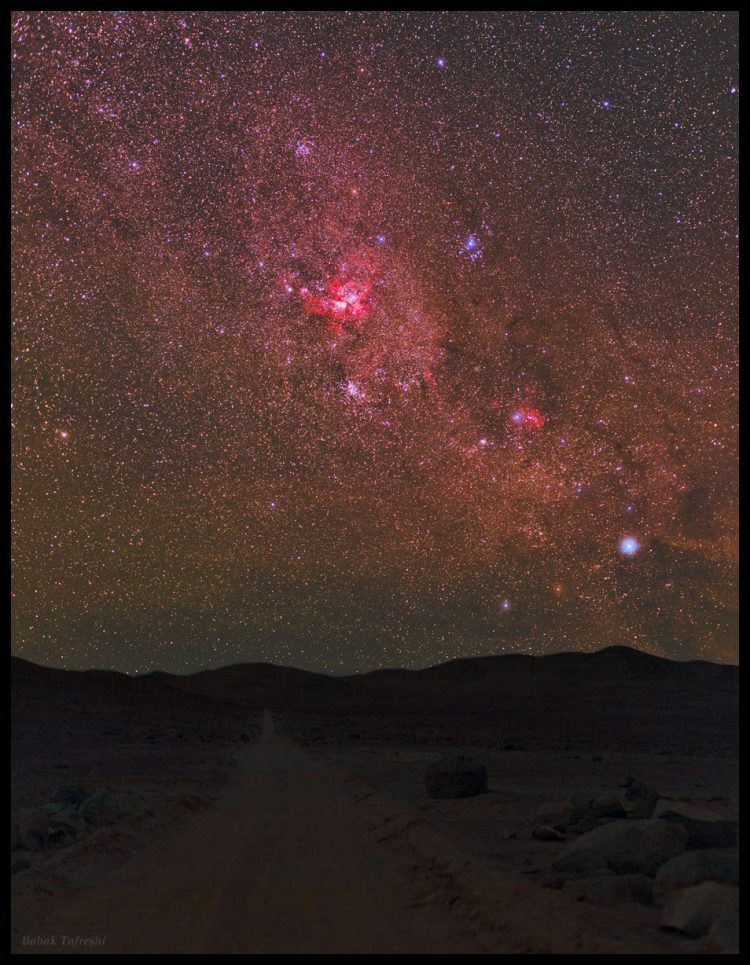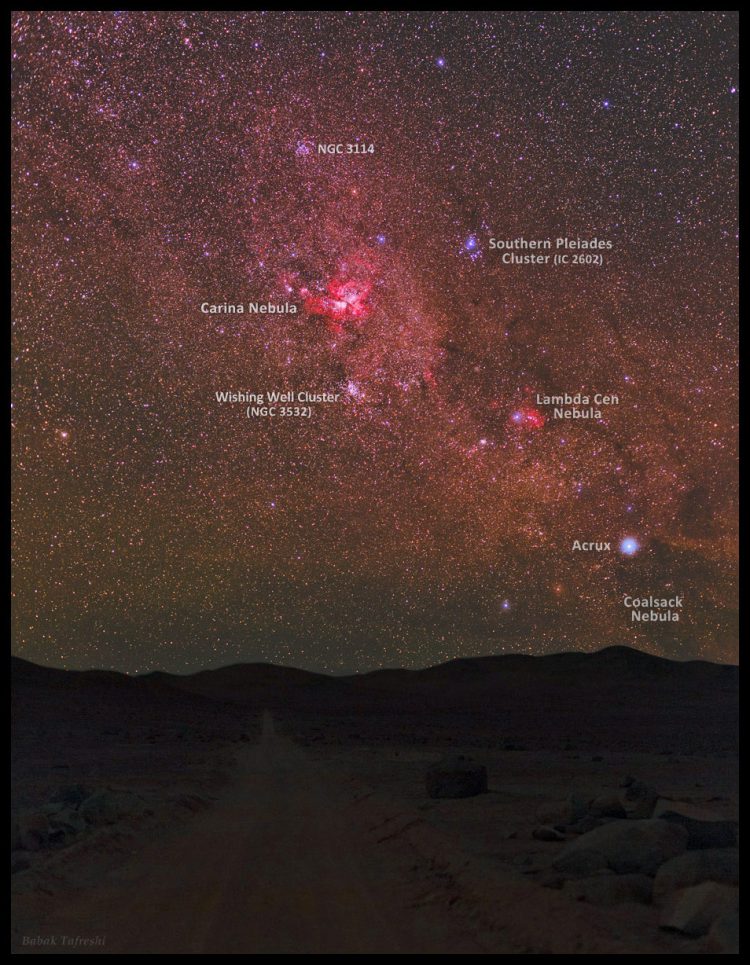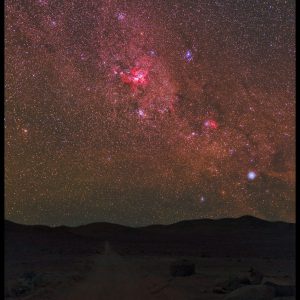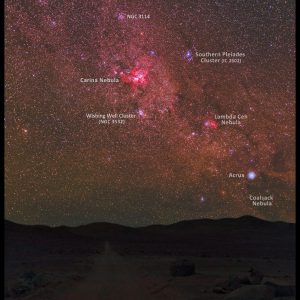A Road to the Future of Astronomy
Description
As seen on Astronomy Picture of the Day, the southern constellation Carina and the Milky Way are photographed in the absolute darkness of Atacama Desert above a road that goes to Cerro Armazones peak in Chile; the site for the European Extremely Large Telescope project. The 42-meter EELT will be four times larger than today largest single-aperture telescopes and this will lead astronomy to a new era in the next decade. Move the slider on the image to see the labels for the notable objects. The most stunning is the Carina Nebula. Although it is some four times as large and even brighter than the famous Orion Nebula, the Carina Nebula is much less well known, due to its location far in the Southern Hemisphere. To its upper right is a star cluster filled with young blue stars. It is known as the Southern Pleiades. The bight star in the lower right is head of the Southern Cross, rising together with the large dark cloud known as the Coalsack Nebula. As added by the photographer “This is not a composite or a photo-montage. The challenge of going deep in this real landscape astrophoto was achieved using a fast telephoto lens and panoramic technique, high sensitivity of a modified DSLR camera, a tracking mount, and not too long exposure to avoid the landscape getting blurred by the tracking mount. These come along with excellent sky quality of this high-latitude desert far from any major source of light pollution. The photo is acquired during my imaging mission for the European Southern Observatory (ESO).”




comments (5)
it’s great.could you tell the exposure?
January 26, 2012 at 2:58 amgreat shot…congrats
January 29, 2012 at 6:35 amA milestone in astrophotography
February 18, 2012 at 1:27 amI have been following APOD for years, and the most confusing thing to me are colors. When am I looking at real colors, and when is the photograph ‘colorized’ to indicate different gasses? Sometimes they tell you but not always. I am fascinated with the idea of colors in space, so I always want to know. In this case, I am so curious to know if I was standing at that spot, would I really see that much red, and also, is any of that red due to sunrise or sunset, or the nebula rising at that time of night, therefore low on the horizon and being seen through more earth atmosphere? Or, did the camera lens have a red filter? Would love an answer.
February 18, 2012 at 12:53 pmGreetings Peggyla: definitely these colors won’t be visible to human unaided eyes. Our eyes are not sensitive enough to colors of faint source of lights. However these colors exits in the lights from the night sky. The red emission Carina Nebula is bright at H-Alpha emission line which is in the far red part of the visible spectrum. Being low on the horizon added indeed a red cast to the sky background of this image, as well the camera was a modified DSLR, while regular DSLRs block most of the red light of these emission nebulae.
March 4, 2012 at 4:14 am